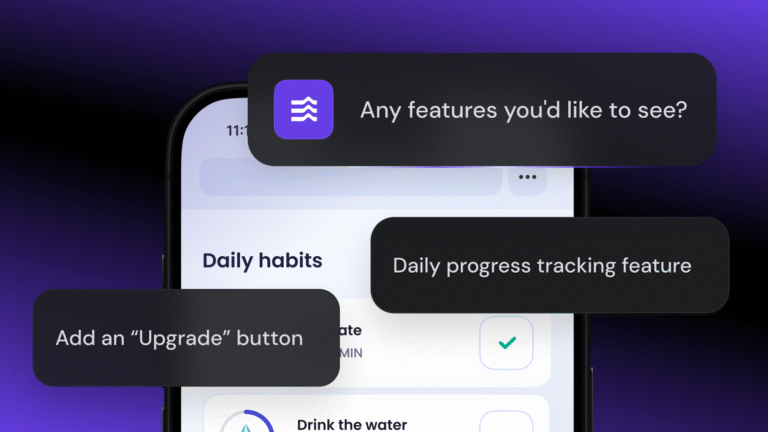
When evaluating CNAPP offerings, consider the following capabilities.
A CNAPP should be capable of integrating with the organization’s CI/CD pipelines, enabling automated security checks and policy enforcement during the development and deployment stages. Integration with SIEM systems is also crucial, as it enables the aggregation and analysis of security events from various sources, providing a comprehensive view of security.
How CNAPPs Work
CNAPP visibility capabilities include real-time monitoring and logging of activities across the cloud environment, enabling security teams to detect unauthorized access, anomalous behavior, and compliance violations promptly. CNAPPs also maintain an up-to-date inventory of cloud resources and their security posture.
The platform’s user-friendly interface and centralized management capabilities simplify security operations, reduce operational overhead, and improve efficiency. This allows organizations to focus more on strategic security initiatives and less on day-to-day operational tasks.
Compliance with regulatory standards is a critical requirement for organizations operating in cloud environments. A CNAPP that provides pre-built templates for common compliance frameworks, such as GDPR, HIPAA, PCI-DSS, and SOC 2, can simplify the process of meeting these requirements.
Additionally, support for multiple cloud providers enables organizations to avoid vendor lock-in, giving them the flexibility to deploy applications across different clouds based on their strategic needs. When evaluating CNAPP solutions, it is essential to ensure that the platform can handle the security requirements of each cloud provider.
A CNAPP must integrate with different cloud platforms such as AWS, Azure, and Google Cloud, offering native support for their respective services, APIs, and security features. This multi-cloud support ensures that the CNAPP can provide consistent security coverage, regardless of where the applications and data are hosted. It simplifies management, allowing security teams to oversee and protect cloud resources from a single platform.
5 Reasons You Need a CNAPP to Secure Your Cloud
The main advantages of using a CNAPP are:
Comprehensive Visibility
By Gilad David Maayan
These templates should automate the assessment of cloud configurations and activities against the specific criteria of each framework, identifying non-compliant resources and providing detailed remediation steps. This automation saves time and resources, ensuring consistent compliance efforts. The CNAPP should also generate comprehensive compliance reports for internal audits and demonstrate adherence to regulatory authorities.
Automated Threat Detection and Response
Securing cloud-native applications demands a comprehensive, integrated approach that a CNAPP offers. By providing deep visibility, automated threat detection, extensive compliance features, and seamless integration with existing tools, a CNAPP enables organizations to maintain a strong security posture across their entire cloud environment. Its ability to scale and adapt to multi-cloud strategies ensures consistent protection as organizations grow.
A CNAPP also supports scalable architectures that can grow with the cloud environment. As organizations expand their cloud footprint, the CNAPP can scale to provide consistent security coverage, managing increasing amounts of data and more complex security scenarios without degrading performance.
Compliance and Governance
A Cloud-Native Application Protection Platform (CNAPP) is a unified security solution that protects applications and data in cloud environments. It integrates various security tools and practices to offer comprehensive protection, ensuring that cloud-native applications remain secure throughout their lifecycle.
The CNAPP simplifies security management across complex cloud environments by consolidating multiple security functions into a unified platform. This reduces the need for disparate point solutions, each with its own management interface and learning curve. It provides a single pane of glass for managing security policies, monitoring threats, and responding to incidents.
Integration and Scalability
Additionally, CNAPPs support automated response actions, such as isolating compromised resources, applying patches, or adjusting configurations to remediate detected threats. This combination of real-time monitoring, automated detection, and response, and integration with development workflows ensures that cloud-native applications remain secure.
Advanced analytics allow the platform to detect sophisticated threats through the use of technologies like machine learning, artificial intelligence, and behavioral analysis. These analytics tools process and analyze vast amounts of data from various sources, including network traffic, application logs, and user activities, to identify patterns that may indicate security risks.
Simplified Security Management
A CNAPP provides compliance and governance features that help organizations meet these requirements. The platform continuously monitors cloud configurations and activities against established compliance frameworks such as GDPR, HIPAA, PCI-DSS, and others. It can automatically identify non-compliant resources and configurations, providing detailed remediation steps to bring them into compliance.
The CNAPP also generates comprehensive compliance reports, which are useful for internal audits and demonstrating adherence to regulatory authorities. These reports can include information on security controls, incident responses, and overall security posture, helping organizations to maintain transparency and accountability.
How to Choose CNAPP Solutions
When a threat is detected, the CNAPP can automatically trigger predefined response actions to mitigate the risk. For example, it might isolate a compromised workload, revoke suspicious access permissions, or deploy security patches. This helps contain threats quickly and minimize their impact, reducing the window of opportunity for attackers.
Runtime Visibility
Runtime visibility allows continuous monitoring of applications and workloads while they are running. This involves real-time tracking of various aspects of cloud resources, such as system calls, file access, network connections, and user interactions. Enhanced runtime visibility provides a detailed and dynamic view of application behavior.
It uses technologies such as machine learning, behavioral analytics, and threat intelligence to identify potential threats in real time. The CNAPP can analyze vast amounts of data from various sources, including network traffic, user activities, and application behaviors, to detect patterns indicating malicious activity.
Advanced Analytics
Integration with identity and access management (IAM) solutions helps in enforcing access controls and managing user identities securely. These integrations ensure that security data flows smoothly across different tools, enabling coordinated threat detection and response.
The platform also integrates with CI/CD pipelines, enabling automated security checks and enforcement of security policies during the development and deployment stages.
Cloud Provider Support
CNAPPs must seamlessly fit into existing IT and security infrastructures while supporting growth. These platforms are typically designed to integrate with a range of tools and services, including cloud service providers (AWS, Azure, Google Cloud), DevOps tools (Jenkins, Kubernetes), and security information and event management (SIEM) systems.
This proactive approach helps identify and mitigate risks early in the application lifecycle, reducing the chances of vulnerabilities reaching production.
Integrations
As cloud-native applications become increasingly central to business operations, leveraging CNAPP solutions is essential for protecting sensitive data, ensuring compliance, and maintaining operational integrity.
Using this visibility, a CNAPP continuously monitors for vulnerabilities and threats, leveraging advanced analytics and machine learning to detect anomalies and potential security breaches in real time.
Templates for Common Compliance Frameworks
A CNAPP provides a detailed view of all cloud assets, including virtual machines, containers, serverless functions, data stores, and network configurations. This aids in understanding the interdependencies and data flows between different components, helping identify potential security gaps and misconfigurations.
CNAPPs are built to handle the unique challenges of cloud environments, including the dynamic nature of cloud resources, the need for rapid deployment, and the complexity of multi-cloud operations.
Real-time analytics capabilities are especially useful, enabling immediate detection and response to threats and reducing the window of opportunity for attackers. Predictive threat modeling can foresee potential security incidents before they occur, enabling proactive measures to prevent them. Historical data analysis helps in understanding past security events and refining future threat detection strategies.
For example, if an application suddenly starts accessing sensitive files it never accessed before, this could be flagged as suspicious. By providing deep insights into the operational state of cloud-native applications, runtime visibility helps security teams quickly identify and respond to threats.
CNAPPs integrate multiple security solutions into a single, cohesive platform that works across multiple cloud environments. It starts by providing deep visibility into cloud resources, configurations, and application behaviors.




